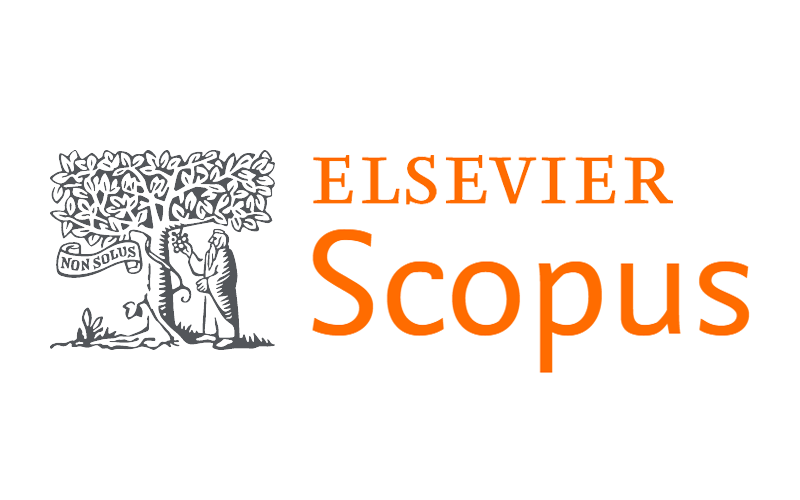Perilaku Merokok di Kalangan Siswa Sekolah Menengah Atas di Kota Padang
Abstract
Abstrak
Latar Belakang: Remaja merupakan fase transisi dari anak-anak menuju dewasa, ditandai dengan percepatan perkembangan fisik, mental, emosional, dan sosial. Mereka masih mencari identitas diri, cenderung mengikuti trend, masih labil, dan sangat mudah dipengaruhi oleh teman sebaya, termasuk pengaruh untuk merokok. Penelitian ini bertujuan untuk mengetahui pengaruh pengetahuan, uang saku, akses mendapatkan rokok, media massa, keluarga, dan teman sebaya terhadap perilaku merokok di kalangan siswa sekolah menengah di kota Padang.
Metode: Metode penelitian ini adalah survei cross-sectional dengan mewawancarai 220 siswa laki-laki di 5 (lima) SMA Negeri di Kota Padang yang dipilih secara multistage random sampling. Data dikumpulkan menggunakan kuesioner terstruktur yang telah diuji validitas dan reliabilitasnya. Regresi logistik berganda digunakan untuk menentukan hubungan tersebut.
Hasil: penelitian menunjukkan 59,1% siswa laki-laki SMA di Padang merokok. Sebagian besar dari mereka memiliki pengetahuan tentang rokok (62.3%), dan terpapar iklan rokok di media massa (52,3%), memiliki teman sebaya perokok (60,5%), dan memiliki keluarga yang merokok (51,4%). Siswa yang memiliki teman sebaya perokok 10,1 kali lebih mungkin untuk memulai merokok (OR 10,1, 95% CI 5,5 - 19,5).
Kesimpulan: Mengetahui bahwa remaja pertama kali merokok pada usia 7 tahun dan perilaku teman sebaya adalah faktor risiko paling besar untuk memulai merokok pada remaja, disarankan untuk dilakukan tindakan pencegahan, seperti konseling kesehatan sedini mungkin (dimulai di sekolah dasar atau menengah).
Smoking Behavior among High School Students in Padang City
Abstract
Background: Youth is a phase of transition from children to adults, marked by the acceleration of physical, mental, emotional, and social development. They are still looking for self-identity, tend to follow trends, are still unstable, and are very easily influenced by peers, including the influence of smoking. This study aims to determine the influence of knowledge, pocket money, access to cigarettes, mass media, family, and peers to smoking behaviour among high school students in the city of Padang.
Method: The method of this study is a cross-sectional survey by interviewing 220 male students in 5 (five) Public High Schools in Padang City who were selected by multistage random sampling. Data was collected using a structured questionnaire that had been tested for validity and reliability. Multiple logistic regression is used to determine the relationship.
Results: The study showed 59.1% of high school male students in Padang smoked. Most of them them have knowledge about smoking (62.3%) and are exposed to cigarette advertisements in the mass media (52.3%), have peers smokers (60.5%), and have families who smoke (51.4%) . Students who have peers smokers 10.1 times more likely to start smoking (OR 10.1, 95% CI 5.5 - 19.5).
Conclusion: Knowing that adolescents first smoke at the age of 7 years and peer behavior is the biggest risk factor for starting smoking in adolescents, precautionary measures are recommended, such as health counseling as early as possible (starting in primary or secondary school).
References
Kemkes RI. Rokok Ilegal Merugikan Bangsa dan Negara [Internet]. 2015. Available from: http://www.depkes.go.id/article/view/15060900001/rokok-illegal-merugikan-bangsa-dan-negara.html#sthash.td60bma8.dpuf
Muhammad Rachmat, Ridwan Mochtar Thaha MS. Perilaku merokok remaja sekolah menengah pertama. J Kesehat Masy Nas. 2013;7.
Yessy S Sabri. Dkk. Profil merokok pada pelajar di tiga SMP di Kota Padang. J Kesehat Andalas [Internet]. 2015; Available from: http://jurnal.fk.unand.ac.id/index.php/jka/article/viewFile/396/350
Rumini, S. dan Sundari S. Perkembangan anak dan remaja. Jakarta: Rineka Cipta; 2004.
Sarwono S. Psikologi remaja. Jakarta: Raja Grafindo Persada; 2011.
Santrock J. Adolescence: Perkembangan remaja. Jakarta: Erlangga; 2007.
Indri Kumala Nasution. Perilaku Merokok pada Remaja. 2007; Available from: http://repository.usu.ac.id/bitstream/123456789/3642/3/132316815.pdf.txt
Indra S, Edison E, Lestari Y. Faktor penentu perilaku merokok murid laki-laki sekolah menengah atas di Kota Pariaman. Ber Kedokt Masy. 2019;35(1):11.
Global Youth Tobacco Survey ( GYTS ) Indonesia Report , 2014. 2014.
Depkes RI. Laporan Riset Kesehatan Dasar RI 2007. 2007.
Kleinbaum, D.G. MK. Logistic regression: A self learning text. Second Edition. USA: Springer; 2002.
BPS. Sensus Penduduk 2010. 2011.
Rahmadi A, Lestari Y, Yenita. Hubungan Pengetahuan dan Sikap Terhadap Rokok Dengan Kebiasaan Merokok Siswa SMP di Kota Padang. J Kesehat Andalas [Internet]. 2013;2(1):25–8. Available from: http://jurnal.fk.unand.ac.id/index.php/jka/article/viewFile/62/57
Fallis A. 済無No Title No Title. J Chem Inf Model. 2013;53(9):1689–99.
Shaluhiyah Z, Karyono K, Noor F. Faktor-Faktor Yang Berpengaruh Terhadap Praktik Merokok Pada Remaja Sekolah Menengah Pertama Di Kabupaten Kudus Tahun 2005. J Promosi Kesehat Indones. 2006;1(1):1–8.
Rachmat M, Thaha RM, Syafar M, Promosi B, Perilaku I, Kesehatan F, et al. Ricardo Tadeu 03082015 Unimed SC.pdf.
Purnawanti RY. Hubungan antara perilaku merokok orang tua dengan perilaku merokok remaja siswa SMP di Kota Bogor tahun 2007. Depok. Universitas Indonesia; 2007.
Soesyasmoro RA, Demartoto A AR. Effect of Knowledge, Peer Group, Family, Cigarette Price, Stipend, Access to Cigarette, and Attitude, on Smoking Behavior. 1172(201):10.
Hurlock EB. Psikologi perkembangan: Suatu pendekatan sepanjang rentang kehidupan: (5 rd ). Jakarta: Erlangga; 2010.









.jpg)








